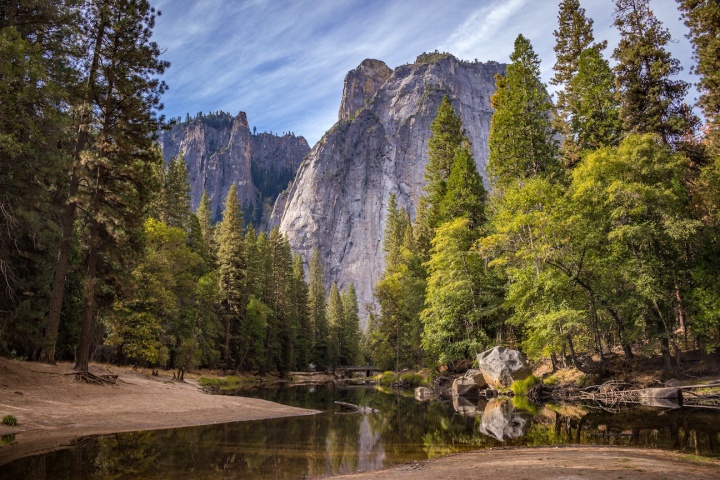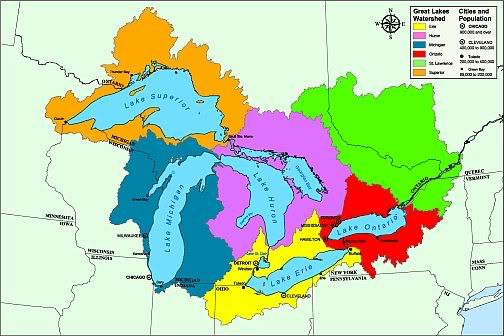Prevent Asian Carp from entering Lake Michigan by closing the Chicago Sanitary/Shipping Canal

- Target:
- Congress and President of United States of America
- Region:
- United States of America
- Website:
- sites.google.com
Asian carp (Silver Carp and Bighead Carp) are now within 8 miles of Lake Michigan. The carp were originally imported from Asia to be used in for aquatic plant control in fish farms in Arkansas (1972). Floods allowed the carp to escape into the Mississippi river system in the early 1980’s and over the years have worked their way north, infesting much of this river basin as the dominant fish species in many of the rivers.
If the Asian carp are able to establish a population in the Great Lakes it will have devastating consequences to the ecosystem of the lakes. Further, it puts at risk the economies of the Great Lakes states centered on the salmon sport fishery -- $7 billion per year just in Michigan.
These species of carp grow to 100 pounds (average over 20 pounds) are a plankton feeder that eat 1/2 of their body weight per day in plankton. The Great Lakes are prime habitat for these carp species and likely will cause significant damage to the existing ecosystem.
Other invasive species such as zebra and quagga mussels are also plankton feeders and have already caused major damage to the Great Lakes fisheries – practically eliminating the alewife and subsequently salmon in Lake Huron since 2005. Plankton is critical as the primary food for small fish in the lakes (alewife, smelt, shad, and newly hatched game fish such as salmon, trout, and walleye). At the rate that the Asian carp feed on plankton it is feared that the entire predator/prey balance in the Great Lakes ecosystem will collapse. No food for small fish means that they are no longer available as food for large fish.
Once established, the carp often become the dominant species in the waters displacing native species such as bass, catfish, walleye, pan fish, buffalo... Significant areas of the Illinois River have 95% of their biomass comprised of Asian carp and have displaced nearly all of the native species. In addition to the Great Lakes themselves, the entire Great Lakes watershed will be at risk. Just as the carp have made it up the Mississippi river drainage (into the Missouri, Illinois, Ohio, Arkansas, Cumberland and other connected rivers) as far north as Minnesota, the fish will also establish themselves in all tributaries of the Great Lakes. Some have theorized that Asian Carp will be more destructive in the rivers than the lakes themselves.

Any river in the shaded area is likely to get Asian Carp if they reach Lake Michigan.
The Asian Carp pose a very real danger to boaters using the waters they infest. When a boat motors though an infested area the fish jump out of the water, often right into the boat and potentially impacting people in the boat.

If you look close, there is a boat in there (right center of pic) causing all of the carp to jump -- Illinois River.
The only connections between Lake Michigan and the Mississippi river drainage is the Chicago Sanitary & Shipping Canal and the Calumet-Sag Canal. Two electrically charged barriers have been installed by the US Corps of Engineers but recent tests have shown that the carp have breached the barriers and are now within 7 miles of Lake Michigan. The Sanitary & Shipping Canal was built in 1900 to reverse the flow of the Chicago river to prevent Chicago's sewage from polluting Lake Michigan. 2.1 billion gallons of Lake Michigan water is diverted into the river via the canal per day.
Unfortunately, the electric barrier has been breached by the carp.
The canal is also used for recreational boating and commercial shipping. Experts have determined that the additional cost of moving the shipped materials currently using the canal if the canal was no longer available would be $21 million per year. This pales in comparison to the $7 billion economic value of the Great Lakes sport fishery in Michigan alone.
The man-made Welland Canal was built to allow shipping to bypass the Niagara Falls and connected lakes Ontario and Erie. Because of this, sea lamprey and alewife were able to get into the other Great Lakes. Between the overfishing by commercial fisheries and the sea lamprey, the native Lake Trout were decimated to negligible levels in the 1940’s. The alewife population then exploded without any predators and the beaches of the lakes were littered with dead alewife that had to be removed by the truck load in the 1960’s. Lamprey were eventually controlled and salmon were planted to feed on the over populated alewife to bring the lakes back into a biological balance.
The potential for a similar ecological/biological disaster of the Asian carp entering the Great Lakes can be prevented by closing the man-made Chicago Sanitary & Shipping canal. But, with the carp so close to the lakes this must be done immediately. The electric barrier has apparently not worked (DNA evidence of the carp above the barrier found in Nov. 2009).
We request that all actions be taken to isolate the Mississippi River drainage from the the Great Lakes. The immediate action should include closing the locks/dams of the Chicago Sanitary & Shipping Canal and the Calumet-Sag Canal immediately and then subsequently filling in the canals to permanently. This is the only effective option remaining to prevent the spread of the Asian carp into Lake Michigan and then all of the Great Lakes.
We the undersigned, call on the Congress and President of the United States of America to introduce, support and pass legislation and/or executive order(s) to close Chicago Sanitary Shipping Canal to prevent Asian carp from entering Lake Michigan and the other Great Lakes.
You can further help this campaign by sponsoring it
The Prevent Asian Carp from entering Lake Michigan by closing the Chicago Sanitary/Shipping Canal petition to Congress and President of United States of America was written by Ryan Gilbert and is in the category Environment at GoPetition.